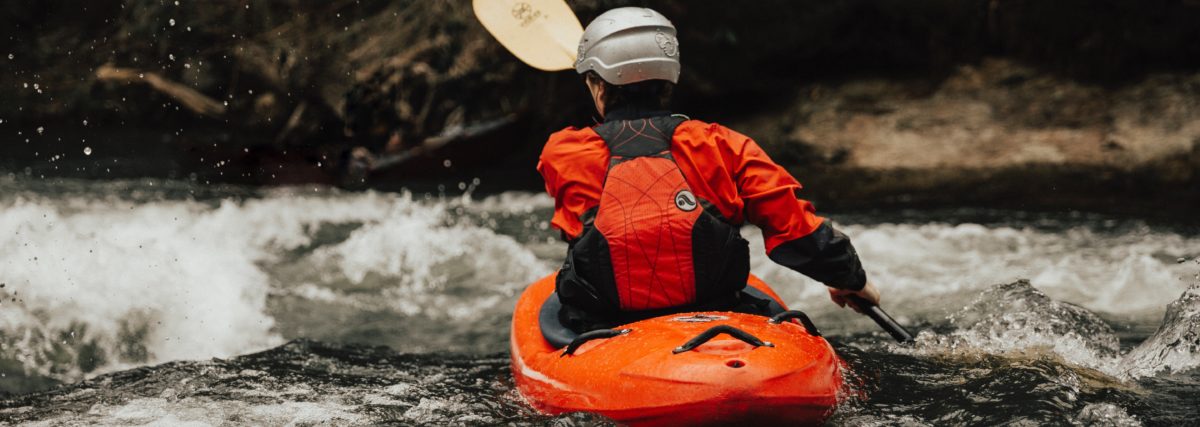Sea kayaks and river kayaks have a whole lotta differences but as someone new to either, it can be hard to spot them until you actually use both and see the differences and how it affects your paddling ability.
Lucky for you, I’ve been on both and am here to help you learn the differences between them.
Sea Kayaks vs River Kayaks: Delving Deep!
A decade ago, I loved kayaking in the ocean. Now, it makes me wanna crap bricks if I’m being honest. With that said, kayaking in the sea is thrilling and you enjoy the beauty of the ocean, scenery, and wildlife like nothing else you’ve done!
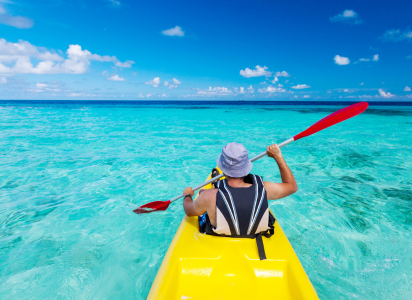
However, you definitely need to understand what kayaks are safe to go sea kayaking and which ones are appropriate for kayaking in the river. Here we go:
#1. Design and Construction
The design and construction of a kayak determine its performance in different conditions. With that said, a sea kayak is designed for long-distance travel in open water conditions. It has a narrow, streamlined shape and a longer length with a pointed bow and stern. Kayaking in the ocean has way different challenges than in a river and this design is most suited for sea kayaks.
In contrast, a river kayak is shorter, wider, and more maneuverable. It is designed for paddling in small and rocky rivers with fast rapids and tight turns.
Compare the both and you’ll see that ocean kayaks are designed narrow and streamlined whereas river kayaks are short and wide to cut through the rapid.
#2. Length and Width
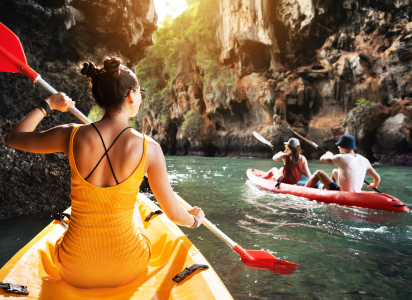
Sea kayaks are generally longer often ranging from 12 to 24 feet in length. The longer length improves their speed and tracking, making them ideal for extended trips across open and choppy waters.
Their narrow width, usually around 18 to 24 inches, contributes to their streamlined design and speed but may compromise on initial stability. The length and width directly contribute to a better experience in the ocean.
On the other hand, river kayaks are comparatively shorter, typically between 6 and 12 feet long. This short length enhances their maneuverability, enabling kayakers to navigate through tight turns and fast-moving river currents.
They also tend to be wider, around 24 to 36 inches, which increases their stability, especially useful when tackling turbulent rapids. Short and thick to get you through those adrenaline pumping moments!
#3. Cockpit
The cockpit is where the paddler sits in a kayak. So in a sea kayak, the cockpit is designed to keep the paddler dry even in rough water conditions. It has a larger opening that allows easy entry and exit, and a spray skirt can be attached to keep the water out (these are super helpful in keeping you dry).
Now, the cockpit of a river kayak is much smaller. It is designed to provide better control and maneuverability in rapids, with less concern for staying dry.
#4. Performance & Handling
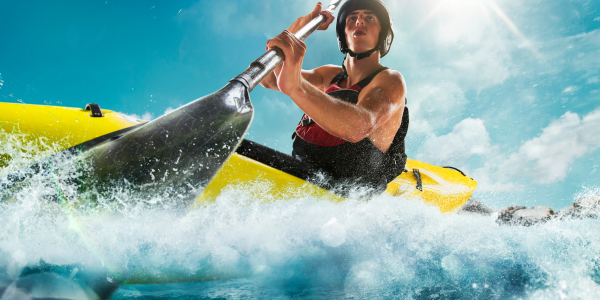
When it comes to performance and handling, the characteristics of sea kayaks and river kayaks diverge significantly.
The sea kayak, with its elongated body and pointed ends, is designed for speed and directional stability, particularly in open, rough waters. The hull design minimizes side-to-side rocking, allowing for efficient paddling and covering vast distances with less effort.
However, this same design decreases maneuverability in tight spaces and requires more skill to change direction quickly. The difference is noticeable when you get in one and try to maneuver it.
Contrarily, river kayaks are designed for agility and quick responsiveness. Their shorter length and wider hull are tailored for making sharp turns and navigating through river obstacles or rapid water currents.
They are highly maneuverable, allowing for quick directional changes, but they definitely lack the stability and speed offered by sea kayaks in straight-line travel or in choppy seas.
These differences are significant when you compare the the nature of your kayaking adventure before selecting the right type of kayak.
#5. Stability
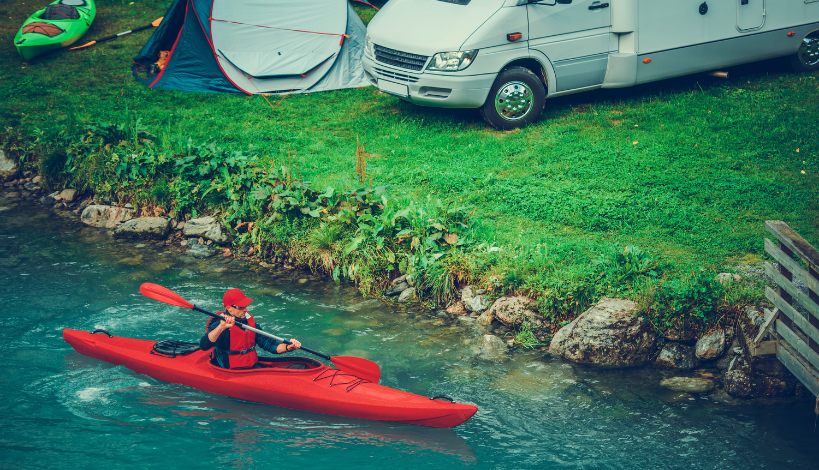
Stability in a kayak is usually characterized into two types: initial and secondary.
Initial stability refers to the kayak’s steadiness when sitting flat on the water, while secondary stability refers to how stable the kayak is when tilted or leaned to one side.
Sea kayaks, with their long, narrow designs, might seem less stable initially, especially for beginners. This is due to their narrow width which may cause the kayak to feel wobbly when it is flat on the water.
However, they excel in secondary stability. Their design enables them to handle waves and rough water conditions effectively, making them less likely to capsize when they are leaned on one side. This is particularly useful when navigating the open, choppy waters that sea kayaking often involves.
River kayaks, on the other hand, are designed with a wider hull, providing excellent initial stability. They are stable when flat on the water, making them ideal for beginners or for calm, slow-moving waters.
However, they may lack secondary stability, making them more prone to tipping over when leaned to one side or when navigating through turbulent rapids.
#6. Hull Shape
When it comes to the hull, a sea kayak has a longer and narrower hull with a more pointed bow and stern. This shape allows the sea kayak to cut through waves more efficiently and maintain a straight course.
In comparison, a river kayak has a shorter and wider hull with a flatter bottom. This hull shape help with better stability and maneuverability in rapids.
#7. Outfitting

Outfitting refers to the accessories and features added to a kayak to make it more comfortable and efficient to use.
In a sea kayak, you’ll typically see features such as adjustable footrests, bulkheads, hatches, rudders, and skegs. These features improve the kayak’s stability, efficiency, and tracking in open water.
In contrast, a river kayak will have features such as thigh braces, hip pads, and backrests. These features provide better control and support in rapids and tight turns.
#8. Storage Space
Differences in the design between sea kayaks and river kayaks also extend to storage space. Sea kayaks are typically outfitted with generous storage options to accommodate the needs of long-distance paddling trips.
They often feature sealed hatches and bulkheads that provide dry storage for camping gear, food, and other essentials. Also, the deck of a sea kayak may have bungee cords or deck lines to secure items that don’t need to be kept dry or require quick access.
By contrast, river kayaks, designed for swift and short runs, usually have pretty limited storage space. The emphasis is on agility and speed rather than carrying capacity. Some models might include small areas for storage, often secured by bungee cords or nets, but typically, they don’t feature enclosed storage hatches.
Having been on several trips on sea and river kayaks, it’s important to note that the type of gear, food, and clothing one would bring for a river run is substantially different – often smaller and lighter – than what one might need on an open sea adventure. Your needs are different for each trip so definitely consider those!
#9. Weight Limit
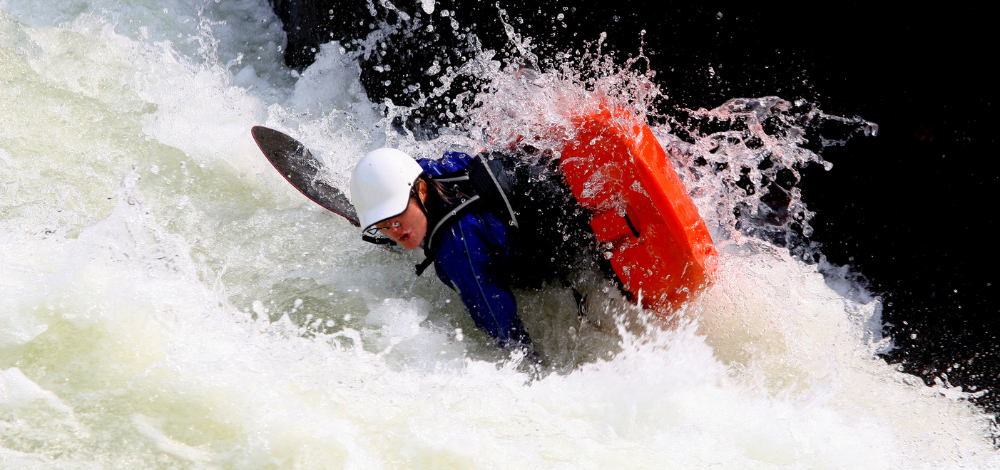
When it comes to load capacity, sea kayaks and river kayaks differ considerably due to the nature of their intended use. Sea kayaks are designed for long-distance travel and because of that, they are built to carry more weight.
They typically have a higher weight limit, generally ranging from 300 to 450 pounds. This allows for the storage of camping gear, food, water, and other supplies needed for extended trips.
On the other hand, river kayaks, designed for quick maneuvers and short runs, tend to have lower weight capacities. They usually have weight limits ranging between 200 and 300 pounds.
These limits reflect their primary function of navigating through river rapids, where agility and responsiveness are paramount, and large storage capacity is generally unnecessary.
It’s important for potential buyers to consider their own weight, along with the weight of any gear they plan to carry, when choosing between a sea and river kayak. This is crucial in determining the type of kayak you should rent or buy.
Can a sea kayak be used in a river?
While a sea kayak can technically be used in a river, it may not be the optimal choice for this type of environment. A sea kayak’s design, featuring a longer, narrow hull and a focus on secondary stability, is specifically meant to handle the open, often choppy waters of the sea.
Their length and lower initial stability could prove challenging when navigating the tighter turns and obstacles commonly found in rivers.
While it’s possible to use a sea kayak in a river, a river kayak, designed with a wider hull and greater maneuverability, would usually be a better fit. I do not recommend using a sea kayak in a river.
Are sea kayaks more stable?
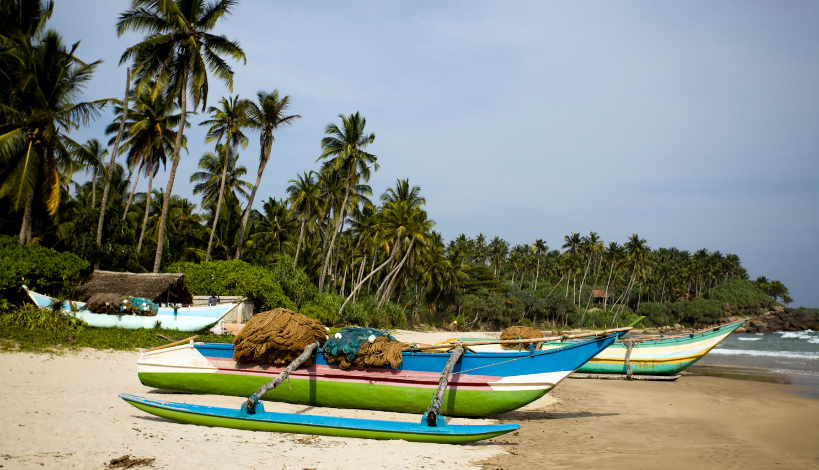
Sea kayaks are designed with a focus on secondary stability, which is the stability a kayak exhibits when it is tilted or leaned to one side. This makes them more stable in choppy waters and less likely to capsize when leaned on one side, which is particularly useful in the open, unpredictable waters of the sea. However, they may feel less stable initially, especially to beginners, due to their narrow width.
On the other hand, river kayaks are designed with a wider hull that provides excellent primary stability, which is the stability a kayak exhibits when it is flat on the water. This makes them feel stable and less wobbly for beginners or when used in calm, slow-moving waters.
So to answer the question, “Are sea kayaks more stable?”, it depends on the context.
Do sea kayaks capsize easier than river kayaks?
The tendency of a kayak to capsize depends largely on its design and stability, as well as the conditions in which it is being used.
Considering sea kayaks, they are designed with secondary stability in mind, meaning they can tilt or lean to one side without capsizing. This comes in handy in choppy sea conditions.
In contrast, river kayaks are designed with a wider hull, offering excellent primary stability when flat on the water, making them feel less ‘wobbly’ to novices. However, they may be more likely to capsize when leaning to one side, especially in the swift currents often found in rivers.
From personal experience, I can tell you that both types of kayaks are relatively stable and do not capsize easily if used in the appropriate conditions for which they were designed. It is also important to remember that the skill and experience of the paddler play crucial roles in preventing capsizes.
In Summary
In summary, sea and river kayaks are two different types of kayaks designed for different purposes.
As I discussed above, the main differences between them can be found in their design, construction, cockpit, hull shape, outfitting, and materials.
Whether you’re planning a long-distance sea kayaking trip or an exciting river run, choose the kayak that’s best suited for the conditions you’ll encounter, and have an amazing time on the water!
